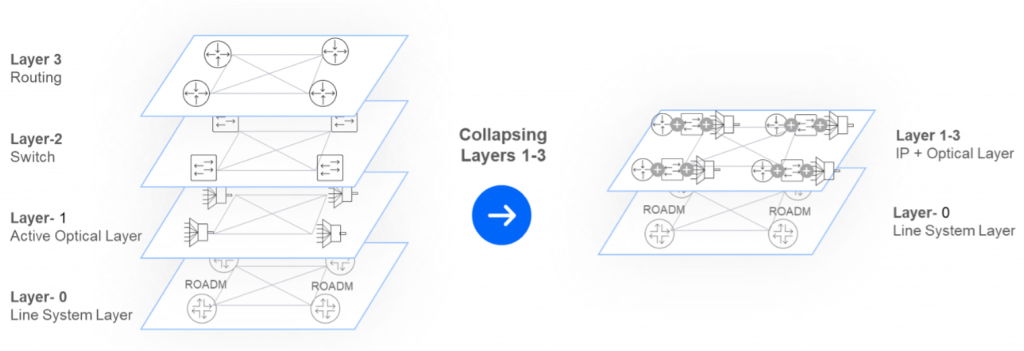|
Getting your Trinity Audio player ready...
|
Take, for example, TikTok’s 15-60 second videos promising easy millions in the stock market or as a tech developer/digital marketer. These drive me nuts! This “get rich quick” culture fosters the illusion that there’s no value in the process. The reality is that real achievements require dedication, a well-thought-out strategy, and the willingness to go the extra mile.
Sadly the allure of short-term gains isn’t limited to social media videos — I have seen service providers (SPs) fall victim to this mentality as well. Take, for example, new technologies like ZR+ optics, which are designed to support high-capacity links over metro, regional, and long-haul distances. These can offer exciting possibilities for building more efficient networks.
However, simply deploying this new technology as local patches won’t unlock its full potential. SPs unwilling to go the extra mile and commit to a long-term deployment vision are at risk of overlooking, and missing out on, the real advantages that come with network convergence using ZR+ optics.
ZR+ optics enable network simplification and cost reduction
Anyone who has operated networks in the last decade understands the need for SPs to find simpler, more flexible solutions to reduce operational overhead. ZR+ optics, with their long range, high capacity, and promising cost impact, are key enablers in network simplification and cost reduction.

Traditionally, service provider networks employ separate architecture layers for IP (switching and routing), the active optical layer (transponders and muxponders), and the physical optic lines (ROADM, mux/demux, and amplifiers). ZR+ pluggables allow routers with QSFP-DD modules to integrate IP and optical layers into one device, collapsing three layers into one.
This IP-optics convergence offers two main benefits:
- Significant cost reduction: Integrating new coherent optics directly into the router and removing the unnecessary extra transponders can significantly reduce costs, as 70% of the line system cost is in the transponders.
- Simplified operations: Managing separate routing and optics teams can be extremely inefficient. Changes in routing can overload fiber links, while damaged fiber can disrupt critical routing paths; these require constant back-and-forth manual adjustments that lead to inefficiencies. A converged approach offers a single, streamlined network with clear visibility, eliminating over-engineering and making operations smoother and more efficient.
What are the dilemmas facing Network Convergence
While the technical aspects of network convergence are achievable, real-world complexities pose the biggest challenges. SPs have several possible routes, including maintaining their legacy optical transport network (OTN), adopting a converged IP-optics approach with ZR+, or even pursuing a hybrid model. The key lies in understanding the trade-offs associated with each option.
Since we are focusing on convergence, here are three main dilemmas related to pursuing converged IP and optic networks:
- Organizational changes: Adopting a converged ZR+ approach means breaking the current operational paradigm. Going beyond just technical convergence, this requires a transformation of both routing and optics teams. New converged teams will need to develop skills in both IP and optical networking.
- Vendor interoperability: While standards like OpenZR+ promote interoperability, vendors can still try to restrict support to their own equipment. Service providers should choose vendors that offer true vendor interoperability and diversity.
- Technology limitations: OpenZR+ is a relatively new standard with inherent limitations, such as transmit power and high sensitivity to fiber quality and optics. SPs should consider vendors with a proven track record in deploying converged networks using ZR+.
Disaggregation: Key enabler for network convergence
DriveNets Network Cloud offers a disaggregated solution, separating software from hardware. This gives service providers complete control over their network infrastructure and the ability to choose any vendor for white boxes, silicon, and optical modules.
This freedom is highly valuable for SPs aiming to converge their networks, as it allows them to:
- use standard white box hardware with native support for ZR/ZR+ pluggable optics
- select any preferred optical cables and ZR/ZR+ pluggable modules
- protect existing pluggable investments and maintain the ability to work with the existing optical planner, ensuring a smoother transition to a converged network
The bottom line for ZR+ and networking convergence
For service providers, going the extra mile with ZR+ and networking convergence is their best option. Without a more simplified network design that improves flexibility and reduces operational costs, SPs will struggle to support emerging services and stay competitive.
For those pursuing IP and optical convergence, disaggregation and the right partner to facilitate this shift are essential starting points.
Frequently asked questions about optics and network convergence
- What are the advantages that come with network convergence using ZR+ optics?
Network operations simplification and cost reduction. - What dilemmas face undertaking network convergence?
Organizational changes, lack of vendor interoperability, and current technology limitations. - Why is disaggregation the key enabler for network convergence?
Disaggregation gives service providers complete control over their network infrastructure and the ability to choose any vendor for white boxes, silicon, and optical modules.
Related content about optics and network convergence
- Transform Your Infrastructure to a Converged and Automated Network
- Collapsing Network Layers Reshapes Network Architecture
- Transforming Network Infrastructure: DIGI deploys DriveNets Network Cloud
- Disaggregated Converged Networks-Next-Gen Optics Interfaces
- Disaggregation Meets Optics Innovation
- Optics 101 for Network Engineers
Download white paper
Edge Networking Solution for Service Providers




